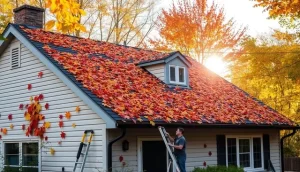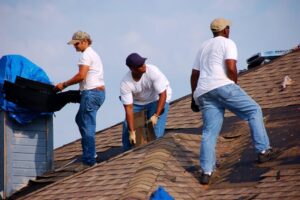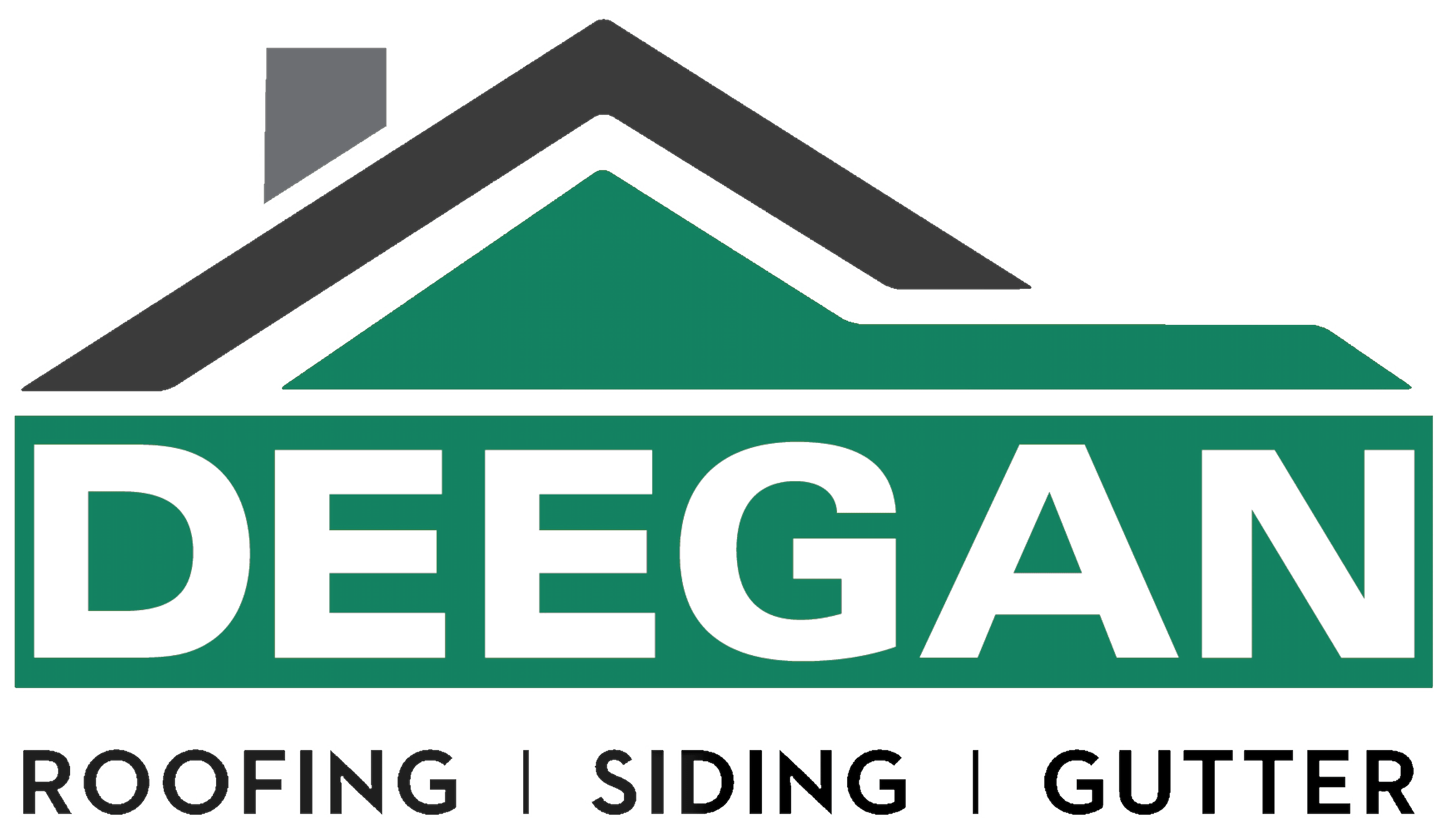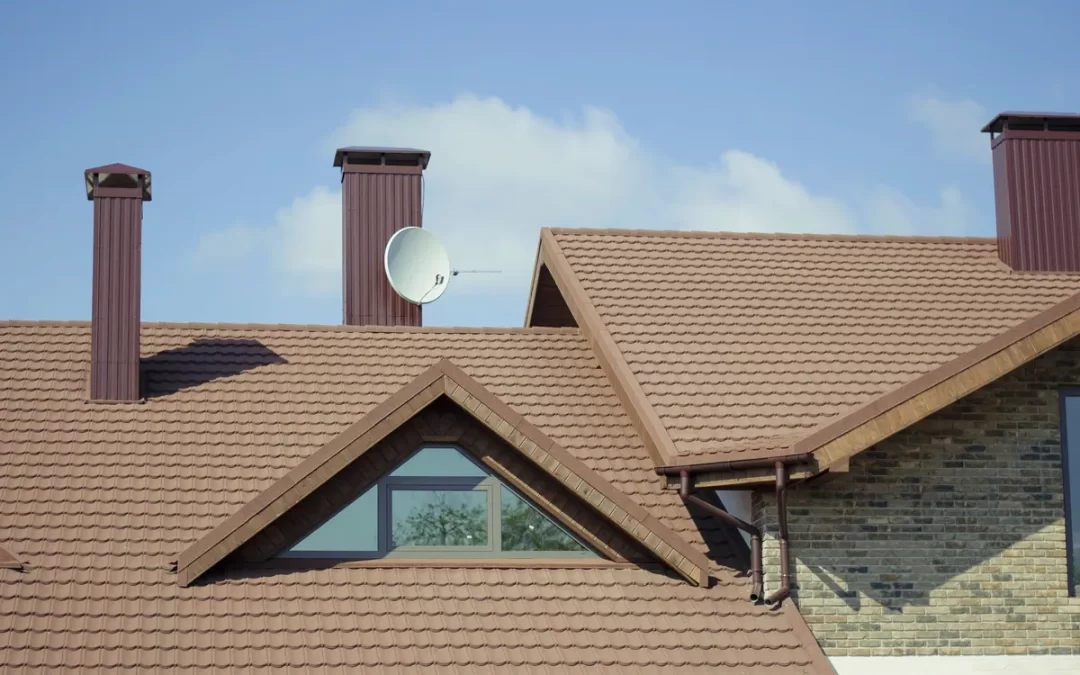Your roof is your home’s first line of defense against the elements, protecting your family from rain, snow, wind, and extreme temperatures. However, roof damage can occur over time, and if left unnoticed, it can lead to severe problems, including , leaks, and costly repairs. Knowing how to identify roof damage early can save you money and extend your roof’s lifespan. In this guide, we’ll discuss how to detect roof damage before it becomes a significant issue.
Common Causes of Roof Damage
Understanding what causes roof damage is the first step in prevention. Here are some common factors that contribute to roof deterioration:
Weather Conditions
- Storms: Heavy rain, hail, and wind can loosen or tear shingles.
- Snow and Ice: Ice dams can form, causing water to back up under shingles.
- Sun Exposure: UV rays can break down roofing materials over time.
Aging Materials
- Roofing materials deteriorate over time, especially asphalt shingles, which have a lifespan of around 20–30 years.
- Older roofs are more prone to leaks, missing shingles, and weakened structural integrity.
Poor Installation or Maintenance
- Improper installation can lead to early damage and leaks.
- Lack of regular maintenance accelerates deterioration.
Tree Damage
- Overhanging branches can scratch shingles and cause damage.
- Falling limbs can puncture or break the roof structure.
Clogged Gutters
- Blocked gutters can cause water to overflow and seep under shingles.
- Excess moisture can weaken the roof’s foundation and cause mold growth.
How to Identify Roof Damage Early 
Now that you know the causes, let’s discuss how to inspect your roof for damage before it becomes a serious issue.
Perform a Visual Inspection
One of the simplest ways to identify roof damage is by visually inspecting it from the ground. Look for:
- Missing, curling, or cracked shingles
- Dark patches or discoloration
- Sagging rooflines
- Moss or algae growth
Check for Interior Signs of Damage
Roof damage often manifests inside your home before it’s visible on the exterior. Check for:
- Water stains on ceilings and walls
- Peeling paint or wallpaper
- Musty odors indicating mold growth
- Light coming through the attic
Inspect Your Gutters and Downspouts
Gutters play a crucial role in keeping your roof in good shape. Look for:
- Shingle granules in gutters (a sign of deteriorating shingles)
- Blockages causing water to back up
- Rusted or damaged downspouts
Examine Flashing and Seals
Flashing is the metal material that seals roof joints and edges. Damaged flashing can lead to leaks. Check for:
- Rust or corrosion
- Loose or missing flashing around chimneys and vents
- Gaps or cracks in the seals
Schedule a Professional Roof Inspection
A professional roofing contractor can assess your roof thoroughly and identify hidden issues. It’s recommended to have an inspection at least once a year, especially after a storm.
Preventative Maintenance Tips
Regular maintenance can help extend your roof’s lifespan and prevent costly repairs. Here are some essential maintenance tips:
Clean Your Gutters Regularly
- Remove leaves and debris to prevent blockages.
- Ensure downspouts direct water away from your home’s foundation.
Trim Overhanging Branches
- Cut back branches that hang over your roof to prevent damage from falling limbs.
Check Your Attic Ventilation
- Proper ventilation helps prevent moisture buildup and extends your roof’s lifespan.
Replace Damaged Shingles Promptly
- If you notice cracked or missing shingles, replace them immediately to prevent leaks.
Apply Roof Sealants
- Sealants can protect against water damage and extend the life of your roof.
Pros and Cons of DIY Roof Inspection
Pros:
- Saves money compared to hiring a professional.
- Gives homeowners better awareness of their roof’s condition.
- Can catch minor issues before they worsen.
Cons:
- Some damage may not be easily visible to an untrained eye.
- Climbing onto the roof can be dangerous.
- Missed problems may lead to costly repairs in the future.
When to Call a Professional Roofer 
While DIY inspections are helpful, some issues require professional intervention. Call a roofing contractor if:
- You notice significant leaks or water damage.
- Your shingles are severely damaged or missing.
- You see structural sagging or signs of roof collapse.
- Your roof is more than 20 years old and shows signs of wear.
At Deegan Roofing, we specialize in professional roof inspections and repairs in Scotch Plains, NJ. Our experienced team ensures your roof remains in excellent condition year-round.
Conclusion
Your roof is one of the most important components of your home, and identifying roof damage early can save you from costly repairs and potential structural issues. Regular inspections, proper maintenance, and professional assistance can help keep your roof in top shape. If you need expert roofing services Deegan Roofing is here to help.
Contact Deegan Roofing 
Visit Us: 61 Terrill Rd, Scotch Plains, NJ 07076
Call Us: (908) 322-6405
Email Us: info@deeganroofing.com
For professional roof inspections and repairs, trust the experts at Deegan Roofing!

